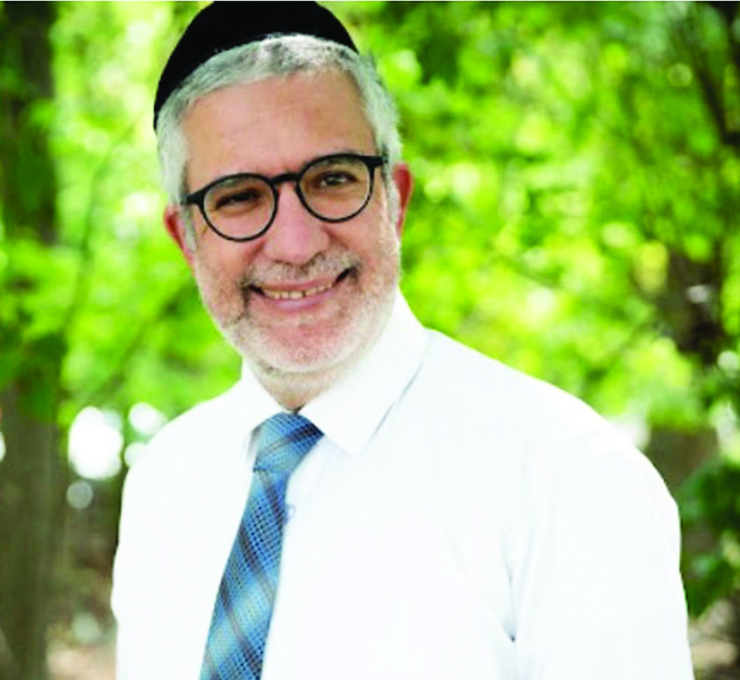
On Shabbat February 9-10, the Young Israel of New Rochelle Sephardic Minyan hosted its first scholar-in-residence program. The Sephardic Minyan invited the entire YINR community to meet and hear from Rav Ilan Acoca over Shabbat.
After a Sephardic Mincha/Kabbalat Shabbat and Moroccan-themed dinner, Rav Acoca presented his first discussion, entitled “Bakashot 101: History and Meaning.” He attributes the traditional Bakashot (“Supplications”) to the pasuk in Sefer Devarim, “You should teach your children.” Acoca explained that, as Sephardic Jews, reading is an important part of their tradition. This includes reading tefillah out loud and knowing the correct tunes, such as for Tanach and Azharot.
Rav Acoca queried: “Does this constitute a way to fulfill the mitzvah of Talmud Torah?” He offered many sources including the Shulchan Aruch and the Gemara. The rabbi concluded that in Sephardic communities, there were two limud Torah tracks: one consisting of in-depth learning of Torah she’bichtav and Torah she’baal peh. The second was for the commoners, consisting of simply reading, whether mishnayot around the Shabbat table, communal Tehillim Shabbat afternoon or reading the Zohar on Motzei Shabbat.
Bakashot originated in Spain towards the time of the expulsion of Jews in 1492 and was a way to continue learning. In the 16th century, Bakashot spread to Tzfat by the followers of the Arizal, and later to countries like Turkey, Syria and Morocco. Each country developed its own traditions.
In Morocco, Bakashot were sung from Parshat Brereshit through Parshat Zachor, and traditionally on Friday nights starting at 3 a.m. until Shacharit. Bakashot were divided into different nubat, or musical notes. Originally, there were 24 nubat, corresponding to 24 hours in a day. Today, only 11 of them are known. Rav Acoca revealed that the Moroccan Bakashot represent close to eight centuries of Sephardic poetry and music. Some of the authors were Rabbi Yehuda HaLevy, Rabbi Israel Najara and Rabbi David Hassin. To the delight of those in attendance, Rav Acoca sang some examples of the Bakashot.
On Shabbat day, Rav Acoca davened with the Sephardic Minyan and delivered a sermon entitled “Rabbinic Autonomy: Past, Present and Future.” This was followed by a Moroccan-themed lunch. During the seuda, YINR Rabbi Reuven Fink praised how “we are one community that embraces everybody.”
Rav Acoca’s third presentation of the day was at a community-wide seuda shlishit on the topic “Sephardic Judaism—Judaism Without Labels.” The rabbi described his traditional Sephardic upbringing, without labels: “One was not Orthodox, nor Modern Orthodox; you were a Sephardic Jew.” He added accounts from different Sephardic communities in the Diaspora where the rabbi of the community had to make difficult decisions to ensure the continued cohesion of their community. Through these examples, Rav Acoca’s message was that Jews in our communities need to stick together because our enemies see us as all the same.
Sephardic Minyan member and one of its leaders, David Lallouz, explained the evolution of the scholar-in-residence program: “The Sephardic Minyan has become a full-fledged, fully functioning part of the Young Israel of New Rochelle and its community. Being able to offer our congregants a scholar in residence is a natural step in the growth and evolution of our kahal within the larger YINR ecosystem that we are very glad to be a part of.”
Lallouz continued: “Rabbi Acoca is Moroccan, and as the majority of our members are Moroccan—as is the Nusach of our Minyan’s tefillah. Rabbi Acoca, who has a fantastic background and an amazing voice, was a natural fit to be our inaugural scholar in residence. Of course, our kahal also includes a diversity of congregants from various Sephardi ethnic backgrounds, including Syrians, Persians and others. Long-term, we look forward to inviting other scholars in residence from different Sephardi origins as well.”
Rabbi Ilan Acoca serves as the rabbi of Sephardic Congregation Bet Yosef of Fort Lee. He is a faculty member of Yeshivat Shalshelet and The Moriah School. Rabbi Acoca serves as an executive member of the Rabbinical Council of America, as well as a member of the Rabbinical Council of Bergen County, the Sephardic Metivta and the Habura.
Prior to moving to New Jersey in 2016, Rav Acoca was the rabbi of Congregation Beth Hamidrash in Vancouver for 17 years and taught regularly in the local Jewish schools. He has also served as a member of the beit din of the Orthodox Rabbinical Council of British Columbia and was a member of the Rabbinical Association of Vancouver. He received his rabbinical ordination from the Rabbinical Institution Beth Hamidrash L’Hora’ah of Montreal and has a master’s degree in Talmudic studies. He is also the author of “The Sephardic Book of Why.”












